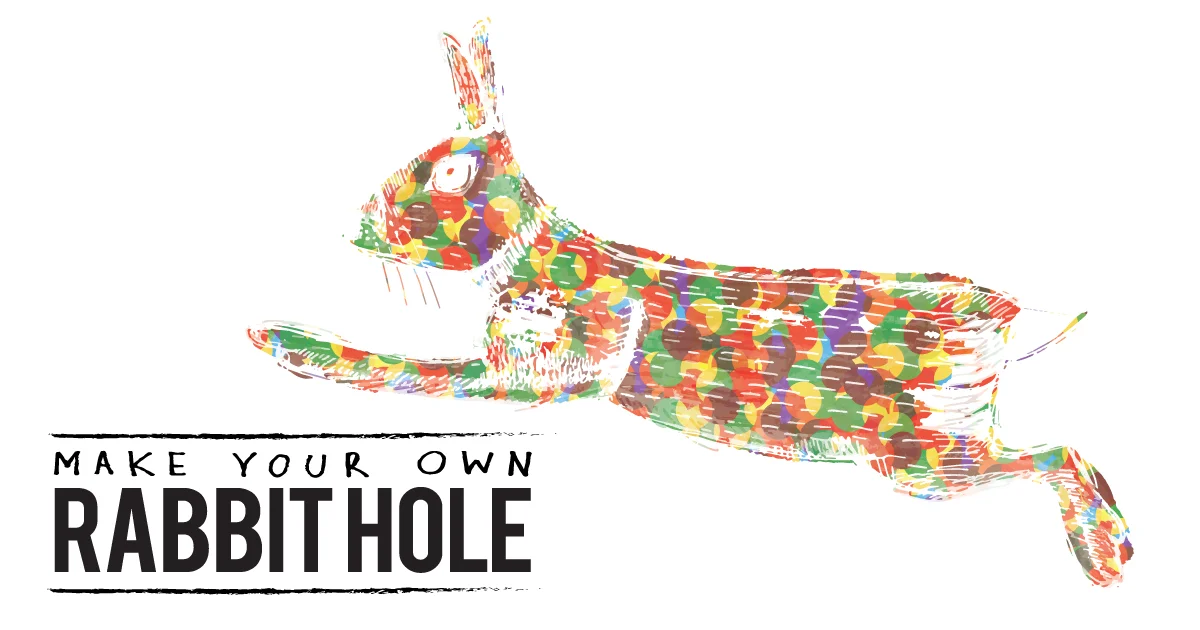Make art like nobody's watching
/This week I've been thinking about how my best work is often done unintentionally—by accident more than by design; fluke shots when no one's looking. The question is: how do you prepare, plan for, and foster that?
Tom Waits—the American singer-songwriter whose voice sounds like he eats broken concrete for breakfast every morning—told this joke in an interview. It's originally his, but I've changed it slightly over years of telling and retelling it.
Two old guys are sitting on a bench in Central Park, New York. One says to the other, "How's your retirement going?"
"Great!" the other says. "I got a new hobby. I've taken up beekeeping."
"Beekeeping!" his friend says.
"Yeah, I love it. I got three thousand bees."
"Jesus, three thousand. Where do you keep them all?"
"In my apartment," his friend says. "In a shoebox, under my bed."
"Three thousand bees in one shoe box? Aren't they cramped? They mustn't be very happy in there."
"Yeah, I thought about that," the other guy says, "but then I thought—f*ck 'em."
I'm happy today because this is Rabbit Hole's 40th issue. I think it's time I relaxed a bit and stopped berating myself for being blocked and unproductive. I'm writing and making things, and I like doing it. It's not always easy, but I get an enormous amount out of it.
And now if I start worrying excessively, or start questioning myself about whether I should keep doing this, I can tell myself, 'Meh. Who cares?'
This project is like a shoebox with three thousand bees in it. What's the difference if I cram in one more?
Art as communication and hiding place
Up until recently, I was stuck in an impossible loop. I liked making things, but I felt that if I showed others what I'd made, I'd be inviting criticism, ridicule or indifference. So I stopped. But that made life feel empty.
The situation was untenable. It was an irresolvable merry-go-round of:
'If I make something and show someone, I'll feel bad. If I don't make something and show it, I'll feel bad too.'
British psychoanalyst and pediatrician D.W. Winnicott said that:
"In the artist of all kinds I think one can detect an inherent dilemma, which belongs to the co-existence of two trends: the urgent need to communicate and the still more urgent need not to be found."
And for Winnicott, the reason behind this paradox was our need to be authentic—a desire to reveal our true selves—while at the same time protecting our true selves from the invasive scrutiny of others.
It feels safe to say we all have a fake persona that gets us through the day. (Why do I always feel like Carrie Bradshaw in Sex and the City when I switch into 'we-all-bla-bla-bla' mode? Ow, these new heels pinch. I wonder if Big will call... Sorry, where was I? We all have a fake persona... right...)
By this I mean a thick, invisible latex suit we put on as we walk out the door, which protects us from insult and injury as much as we can be protected against such things. It might be the latex suit of status, or intellect, or one with big manly muscles, or an impenetrable 'can do' attitude and smile to go along with it.
However, there's nothing sinister about this false self. Its ultimate purpose is not to deceive but protect what is most valuable to us: our true selves, our private selves, the part we hide away and visit in daydreams or dress up in the characters from fiction.
But as Winnicott says, we can't lock away the best parts of ourselves all the time. That's no type of life.
"It is a joy to be hidden," he explains, "and disaster not to be found."
If we're lucky, we get to entertain our true selves in our own work (and if we're even luckier, other people see glimpses of their true selves in what we make). The question is: what do you hide and what do you reveal?
Making things for yourself first
I think the next stage in my artistic development will be about coming to terms with this paradox.
As artistic, creative beings, each and every one of us is as complex as a Penrose triangle, which both reveals and hides its true form in its impossible complexity.
"Only the True Self can be creative and only the True Self can feel real," Winnicott says.
"Whereas a True Self feels real, the existence of a False Self results in a feeling [of being] unreal or a sense of futility."
And for me, it's that feeling of futility which overtakes me when I'm working on something that isn't true to who I am, or something that reveals too much of who I am. (If that makes sense.)
I thought the answer would be finding a way to trick myself into thinking nobody was watching. But I think the real answer involves no trickery at all. The next phase in my development is about finding time to play—to make things just for myself, and only sharing the bits I'm happy to share.
Artists are more creatures of habit than anything else. They buzz around collecting what they are instinctually drawn to, and they can't help making pretty things by the sum total of their endeavors.
I'm not sure what I'm trying to say here. Am I talking to you or me or both? Are these few hundred words happy on the page?
Who cares. F*ck 'em.
Rabbit















Painter Tracey Read talks about spending four weeks painting and drawing her way around Italy.